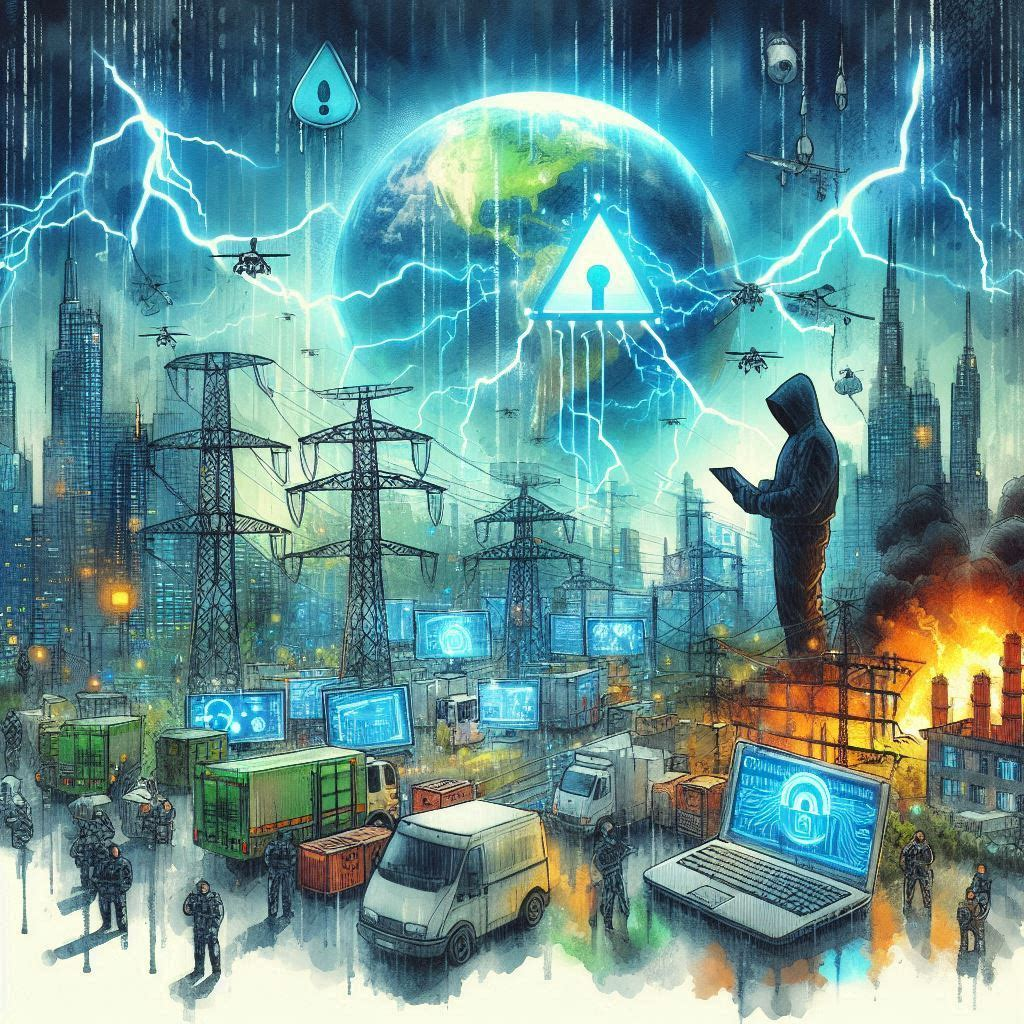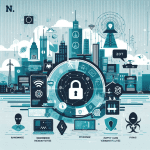Cyberattack, once seen as threat limited to financial losses, credit card frauds, data breaches, or the disruption of services, have evolved to pose a direct threat to human lives. As our world becomes increasingly digitized, the intersection of digital systems and real-world processes grows.
In the recent turn of events world witnessed how the pagers can be weaponized. Lebanon witnessed 2800 injuries and 10 fatalities in the pager blast. This blast was master minded by Israel. Though there is no clarity as to how this attack was perpetrated one of the possibilities is the cyberattack.
Malicious actors are constantly finding new ways to compromise information systems through cyber attacks that aim to disrupt or gain unauthorized access to computer systems. One common method involves distributed denial of service (DDoS) attacks, where attackers overwhelm target systems with traffic, causing them to crash or become inaccessible.
Additionally, malicious software and malicious code are often delivered through email attachments or social media links, allowing attackers to infiltrate systems and destroy data or steal sensitive data. SQL injection attacks can further exploit vulnerabilities in databases, compromising personal data and leading to data breaches.
Other sophisticated tactics include man-in-the-middle (MITM) attacks, where attackers intercept communication between two parties to steal credentials or sensitive information. Ransomware attacks are another significant threat, where hackers encrypt crucial files and demand payment to restore access.
When these attacks occur, law enforcement agencies step in to investigate, but the damage is often already done. With growing concerns over data privacy, companies are under pressure to secure their systems to prevent malicious actors from exploiting weaknesses and compromising sensitive data across various platforms, including social media and corporate networks.
This interdependence makes critical infrastructures, healthcare systems, transportation, and even military defense vulnerable to cyberattacks that can cause catastrophic physical consequences, including fatalities. Understanding how cyberattacks can lead to the loss of human lives is crucial for reinforcing defenses and safeguarding critical systems.
Cyber Attack on Critical Infrastructure
One of the most significant ways cyberattacks can result in human fatalities is by targeting critical infrastructure, such as power grids, water supply systems, and transportation networks. These systems are essential for maintaining societal order and ensuring the well-being of populations. Disruptions in these areas can have dire consequences.
Power Grid Attacks
Power grids are an essential part of modern life, providing electricity to homes, businesses, and vital services such as hospitals. Cyberattacks on power grids can lead to widespread blackouts, leaving cities and even entire regions without electricity.
During severe weather conditions, such as heatwaves or winter storms, power outages can cause significant harm. Without electricity, hospitals may lose critical life-saving equipment, and people relying on medical devices at home may find themselves in life-threatening situations. Additionally, large-scale blackouts can lead to traffic accidents as traffic lights go offline, or disrupt emergency services, delaying help to those in need.
Read More: Cyber Threat Exposes Dangerous Vulnerability in Power Grids: Alarming Risks of Cascading Failures
Water Supply Attacks
Water treatment plants and distribution systems are also vulnerable to cyberattacks. Hackers who gain access to these systems can tamper with water treatment processes, introducing contaminants or harmful chemicals into the water supply. This could lead to widespread illness or death, especially in large cities where millions rely on public water systems. In 2021, hackers attempted to raise the levels of sodium hydroxide (a toxic substance) in the water supply of Oldsmar, Florida. Authorities thwarted them before they could cause harm. Had the attack been successful, it could have endangered thousands of lives.
Read More : How Water Supply Attacks Endanger Communities ?
Transportation Systems
Cyberattacks on transportation infrastructure can have deadly consequences as well. Hackers could target rail systems, air traffic control, or even traffic management systems, causing collisions or derailments. This not only endangers passengers but also the general public, as crashes in densely populated areas could lead to mass casualties.
Hacking Medical Devices
The healthcare sector is increasingly reliant on connected medical devices to monitor and treat patients. From pacemakers to insulin pumps and ventilators, these devices are integrated into hospital networks or directly connected to the internet. While this connectivity improves medical care, it also creates vulnerabilities that cybercriminals can exploit to cause direct physical harm to patients.
Pacemaker Attacks
Pacemakers and defibrillators are life-saving devices implanted in patients to regulate their heart rhythms. However, these devices can be hacked. If cybercriminals gain access, they could remotely tamper with the settings, causing the pacemaker to malfunction. This could lead to heart failure or other severe medical complications, ultimately resulting in the death of the patient. There have already been reports and proof-of-concept demonstrations showing how vulnerable these devices are to remote hacking.
Critical Vulnerabilities: The Dark Side of Pacemaker Technology
Insulin Pump Manipulation
Similarly, insulin pumps, which help diabetic patients regulate their blood sugar levels, are also vulnerable to cyberattacks. A hacker could alter the dosage delivered by the pump, administering either too much or too little insulin. This could cause severe hypoglycemia (low blood sugar) or hyperglycemia (high blood sugar), both of which can be fatal if not treated promptly.
Hospital System Disruptions
Beyond medical devices, cyberattacks on hospital networks can also have deadly consequences. Ransomware attacks, in particular, can lock healthcare providers out of patient records or essential medical systems. If doctors and nurses cannot access critical information, such as patient histories or medication schedules, they may not be able to deliver life-saving care in time. In Germany, a ransomware attack in 2020 forced the closure of a hospital, resulting in the death of a patient who could not be admitted in time for treatment.
Weaponizing Technology and Industrial Systems
Cyberattacks can also cause fatalities by manipulating industrial control systems or weaponizing connected technology. Digital systems manage many modern industrial processes. If hackers breach those systems, they can cause physical malfunctions that lead to injury or death.
Automobile Hacking
Modern cars and trucks are increasingly controlled by computers and are connected to the internet for navigation, entertainment, and safety features. Hackers who gain control of these systems can manipulate the vehicle’s speed, brakes, or steering, causing crashes. An example of this was demonstrated in 2015, when security researchers remotely took control of a Jeep Cherokee, showcasing the vulnerabilities in connected vehicles. If a cybercriminal were to exploit these weaknesses, they could cause fatal accidents.
Read More: Cyber Attacks on Connected Cars
Industrial Control Systems
Industrial control systems manage a wide range of processes in factories, chemical plants, and even nuclear facilities. A cyberattack targeting these systems could cause catastrophic failures, such as explosions, fires, or toxic chemical leaks. For example, the Stuxnet virus, which targeted Iran’s nuclear facilities in 2010, manipulated the industrial controls to cause physical damage. Stuxnet was designed to avoid causing harm to human life. However, other attacks on similar systems could easily lead to fatalities.
How Cyber Attacks on Industrial Control Systems Can Endanger Lives ?
Weaponized Drones
Another potential source of fatal cyberattacks is the growing use of drones in both civilian and military settings. Hackers could take control of armed drones used in combat, or even delivery drones, to crash them into populated areas or sensitive locations, resulting in casualties.
As technology becomes more deeply embedded in every aspect of our lives, the potential for cyberattacks to cause physical harm and even fatalities grows. Cybercriminals can target critical infrastructure and healthcare systems. They can also weaponize everyday technology. This capability allows them to cause widespread chaos and death. Strengthening cybersecurity measures across all sectors is essential. This is especially important in areas where digital systems control physical processes to prevent these deadly consequences.





